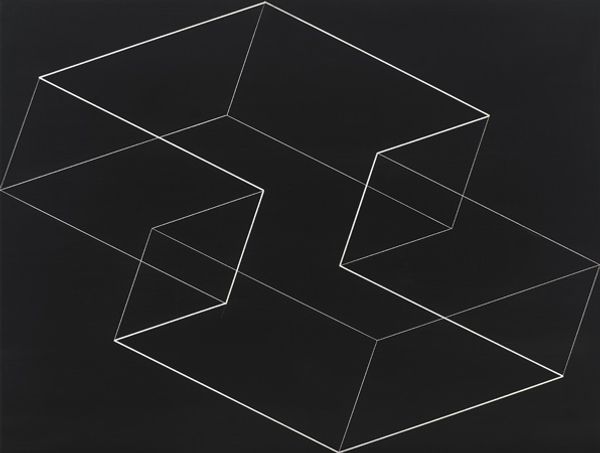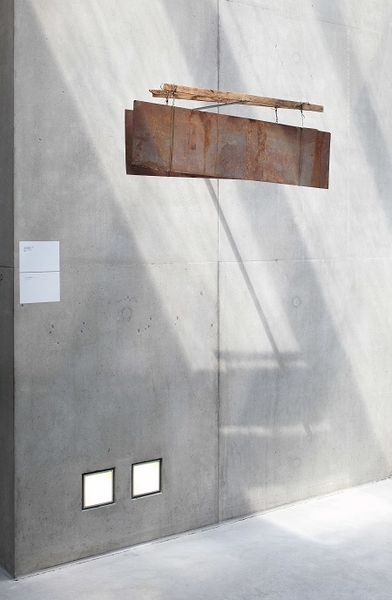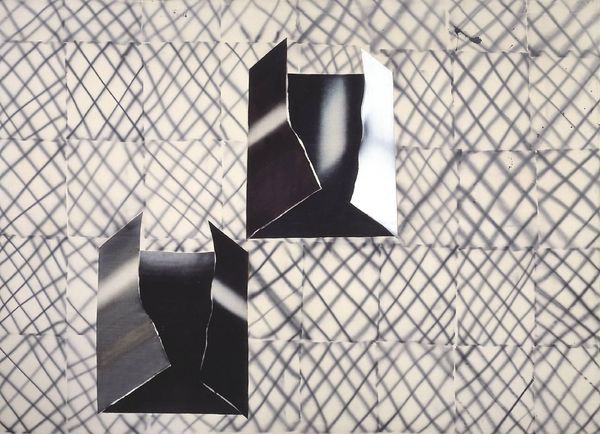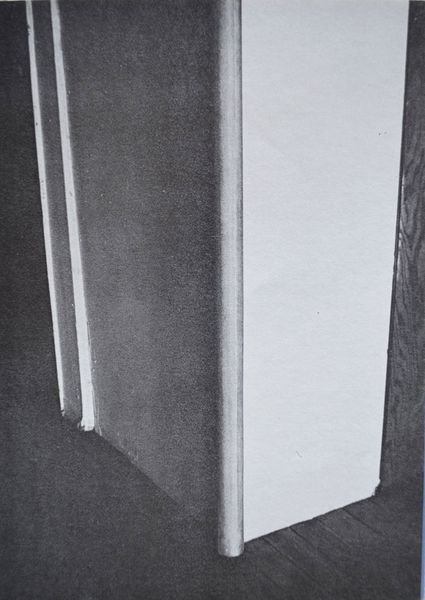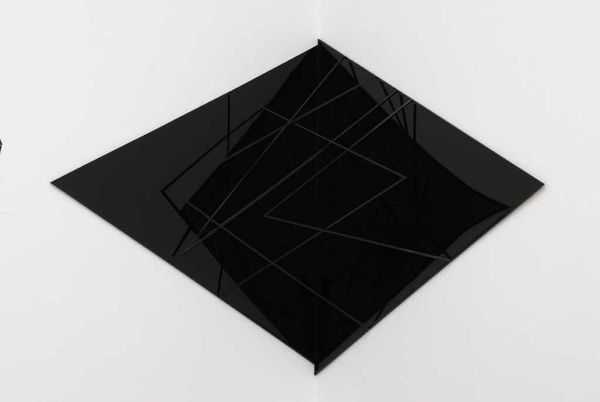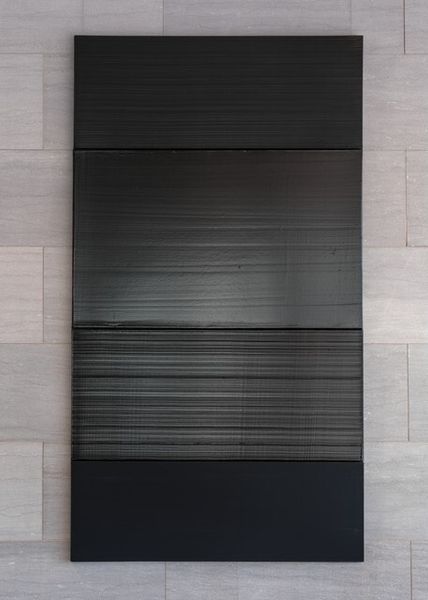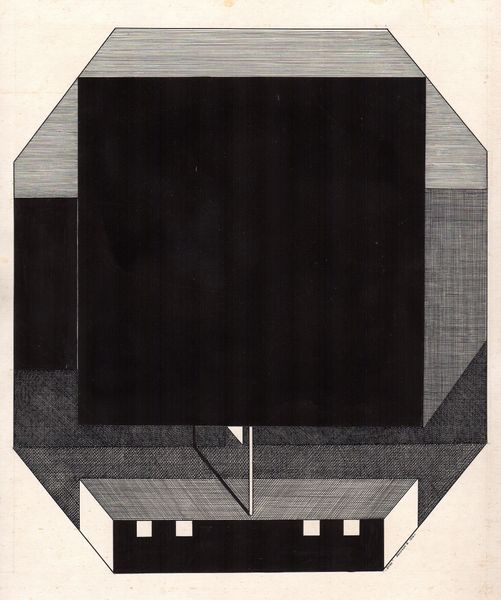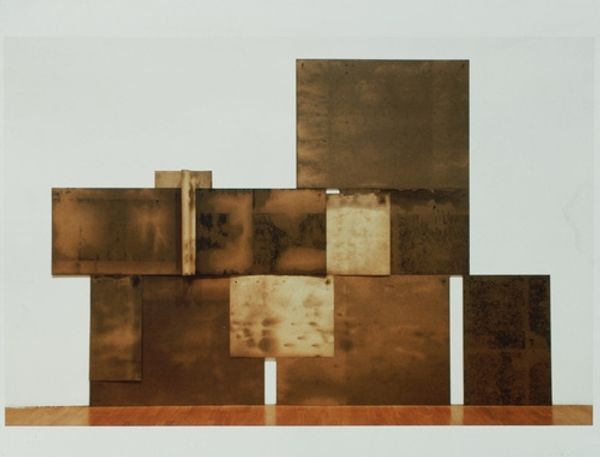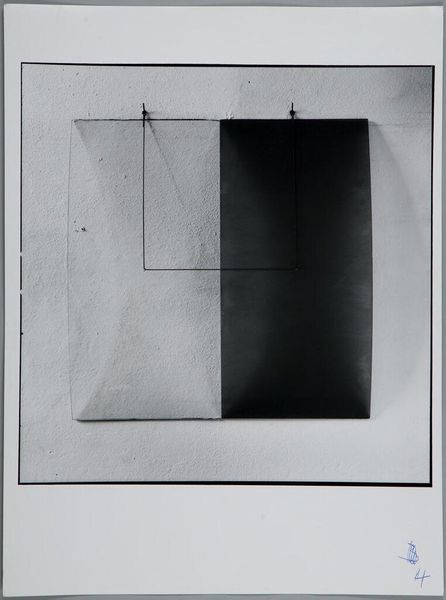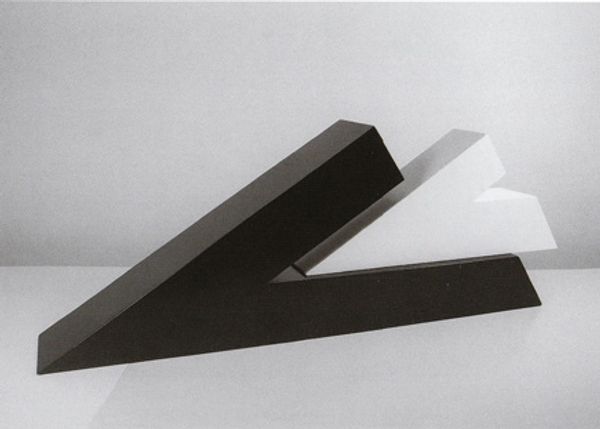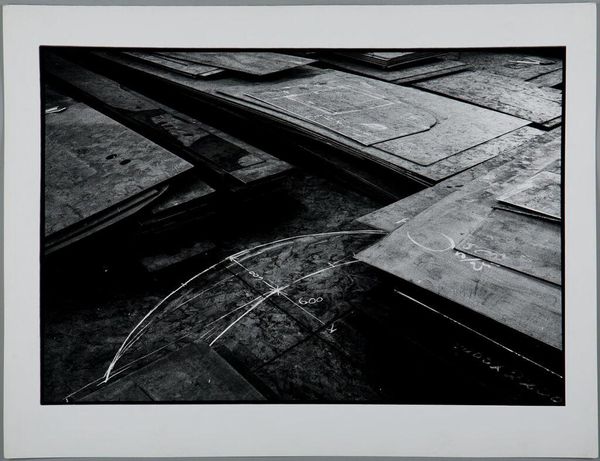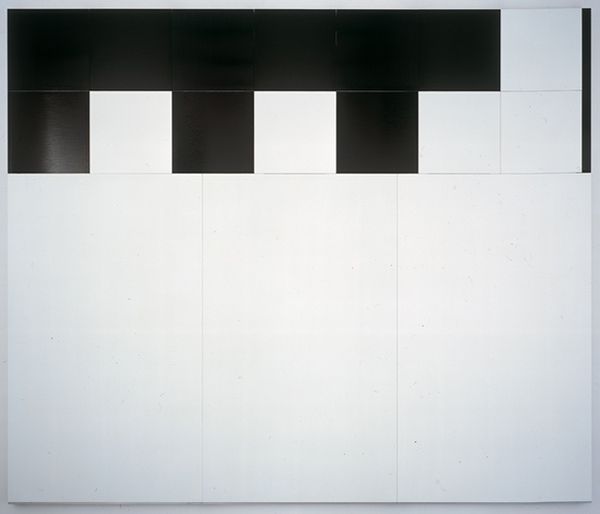
metal, alabaster, sculpture
#
metal
#
sculpture
#
alabaster
#
geometric
#
sculpture
#
abstraction
#
line
Copyright: Rafal Bujnowski,Fair Use
Editor: Here we have Rafal Bujnowski’s "Eye Sockets (3)" created in 2010 using alabaster and metal. The dark void within the geometric shape carved into the alabaster feels a bit ominous, almost like looking into an abyss. What are your initial thoughts when you see this piece? Curator: The title is, indeed, a striking entry point. "Eye Sockets" evokes immediate bodily and perhaps, by extension, socio-political readings. Consider how vision is constructed, both literally and figuratively, in our culture. Bujnowski seems to be hinting at the limitations or perhaps even the absence of seeing clearly. Who or what is being denied sight? What structures enforce that? Editor: That’s a powerful interpretation. So, it's less about the sculpture itself, and more about what the missing “eye” implies about societal power dynamics? Curator: Precisely. The cold, geometric forms contrasted with the relatively fragile material like alabaster amplify this. Alabaster, often associated with classical sculpture and notions of permanence, is here quite vulnerable, quite literally hollowed out. It makes me question the supposed stability of social structures represented here through minimalist geometric shape. Editor: I hadn't considered the fragility of the material. How does this artist subvert the traditional role of sculpture as a monumental, enduring object? Curator: By rendering the "sockets" empty, Bujnowski dismantles expectations of a complete narrative or fixed meaning. The absence becomes a space for critical reflection on how power is exerted through controlling what, or who, can see. And perhaps also who is *seen*. What does that make you think about the role of museums in society today, showing us, the public, what to see and think about? Editor: It highlights the museum's own position in this power dynamic; what is seen versus what isn’t is, in itself, a conscious statement. I'll definitely view minimalist art differently from now on! Curator: Indeed, questioning institutional influence enhances how we relate to the piece as citizens.
Comments
No comments
Be the first to comment and join the conversation on the ultimate creative platform.
